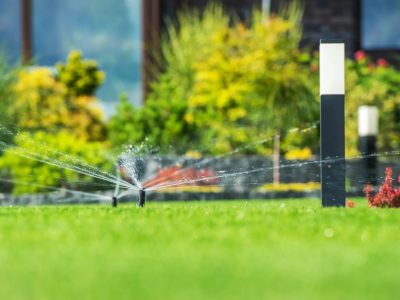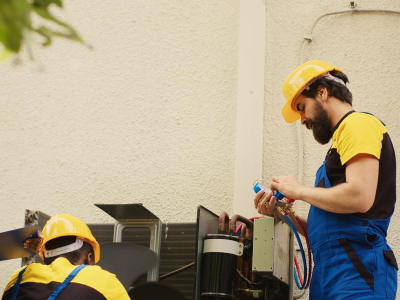When water damage occurs, time matters. Shut off the source, isolate electrics if safe to do so, and protect valuables from wicking or staining. Photograph the scene before moving items. If the source is unclear or the area is unsafe, step back and call for emergency water damage restoration. Acting within the first sixty minutes reduces secondary damage such as swollen skirting, cupped timber, and microbial growth.
Stabilise The Source And The Space
Source control comes first. That may mean a plumber repairing a burst pipe, facilities staff clearing a roof drain, or management stopping an overflowing tank. Next, stabilise the environment. Openings can be created for ventilation if the weather permits, but avoid unplanned airflows that draw damp air deeper into the building. Specialist teams set up containment to define wet zones, prevent cross-contamination, and prepare for controlled drying.
Prioritise Safety Before Any Work Starts
Water can compromise electrical systems, load-bearing elements, and indoor air quality. Do not switch on ceiling fans or wall sockets in affected spaces until an electrician clears them. Standing water hides trip hazards and sharp debris. Professional emergency water damage restoration includes an on-site safety brief, lock-out of risky circuits, and the placement of warning signage so occupants understand access limits.
Map Moisture To Reveal The Hidden Damage
Visible staining tells only part of the story. Restoration teams use non-invasive meters, pin probes, and infrared imaging to create a moisture map. Cavities, insulation, and subfloors are checked because trapped moisture prolongs drying and raises mould risk. Accurate mapping guides where to remove skirting, lift floor coverings, or open small access points for targeted airflow. This step turns guesswork into a measured plan.
Choose The Right Drying Strategy
Effective drying balances airflow, temperature, and humidity. Air movers sweep evaporation from wet surfaces, while dehumidifiers capture the released vapour. Desiccant units help when ambient humidity is high or temperatures are low. Technicians record grain depression and equipment performance to show that conditions support drying rather than redistribution of moisture. With water damage, rushing this stage causes future failures such as blistering paint and odours that return after repainting.
Decide What To Remove And What To Save
Not every wet material requires demolition. Non-porous and semi-porous finishes can often be cleaned and dried in place. Porous materials that have delaminated, lost structural integrity, or show embedded contamination are removed to clean margins. Timber floors may be tented for targeted dehumidification; drywall at skirting level might be flood-cut to ventilate the cavity. Decisions are evidence-led and documented to support insurance review.
Control Microbial Risk Early
Elevated humidity and nutrients from building materials create conditions for microbial growth. Airborne spore counts can rise within days. Where readings or conditions indicate risk, restoration plans add HEPA air filtration and cleaning protocols that remove residues rather than mask odours. Antimicrobial products are used as a complement to drying, not a substitute. The focus remains on eliminating the moisture that sustains contamination.
Protect Contents And Prevent Secondary Loss
Soft furnishings, paper records, and electronics are vulnerable to wicking and corrosion. Move items to a dry, ventilated staging area and separate wet layers to speed drying. For high-value contents, inventory and triage determine which items go to specialist restoration. Dehumidification in the staging zone reduces rust and mould on contents while structural drying proceeds in the primary work area.
Document Everything For Claims And Compliance
Clear records reduce disputes and help future maintenance. A sound water damage file includes source details, moisture maps, photos before and after, drying logs, equipment lists, electrical safety clearances, and a summary of removed materials. This documentation supports building managers, strata councils, and insurers in determining scope, liability, and any required upgrades.
Verify Dryness Before Rebuild
Do not repaint or reinstall finishes until materials reach the target moisture content. Verification combines instrument readings at agreed points with a visual inspection under bright light. Where microbial risk was elevated, teams may include post-drying cleanliness checks. Rebuild can then proceed on a dry substrate, reducing the chance of trapped moisture causing future defects.
Plan For Recurrence Prevention
Once the building is stable, address the reason the incident escalated. Improve roof or balcony drainage, insulate cold surfaces that condense, service air-conditioning drains, and review cleaning protocols that may have blocked weep holes. Simple measures such as humidity monitoring in vulnerable rooms and regular HVAC maintenance lower the baseline risk and shorten the response time if an event happens again.
Selecting A Capable Restoration Partner
Look for a provider that offers measured drying rather than cosmetic fixes. They should explain their containment plan, equipment sizing relative to room volume, and daily verification routine. Ask about 24/7 mobilisation, electrical safety coordination, and how they manage occupant communication in active premises. Competent emergency water damage restoration focuses on stabilising the building, protecting health, and providing a defensible record, not just removing visible water.
For rapid containment, measured drying, and documented clearance following water damage, contact BELFOR for professional emergency water damage restoration in Singapore.








Comments